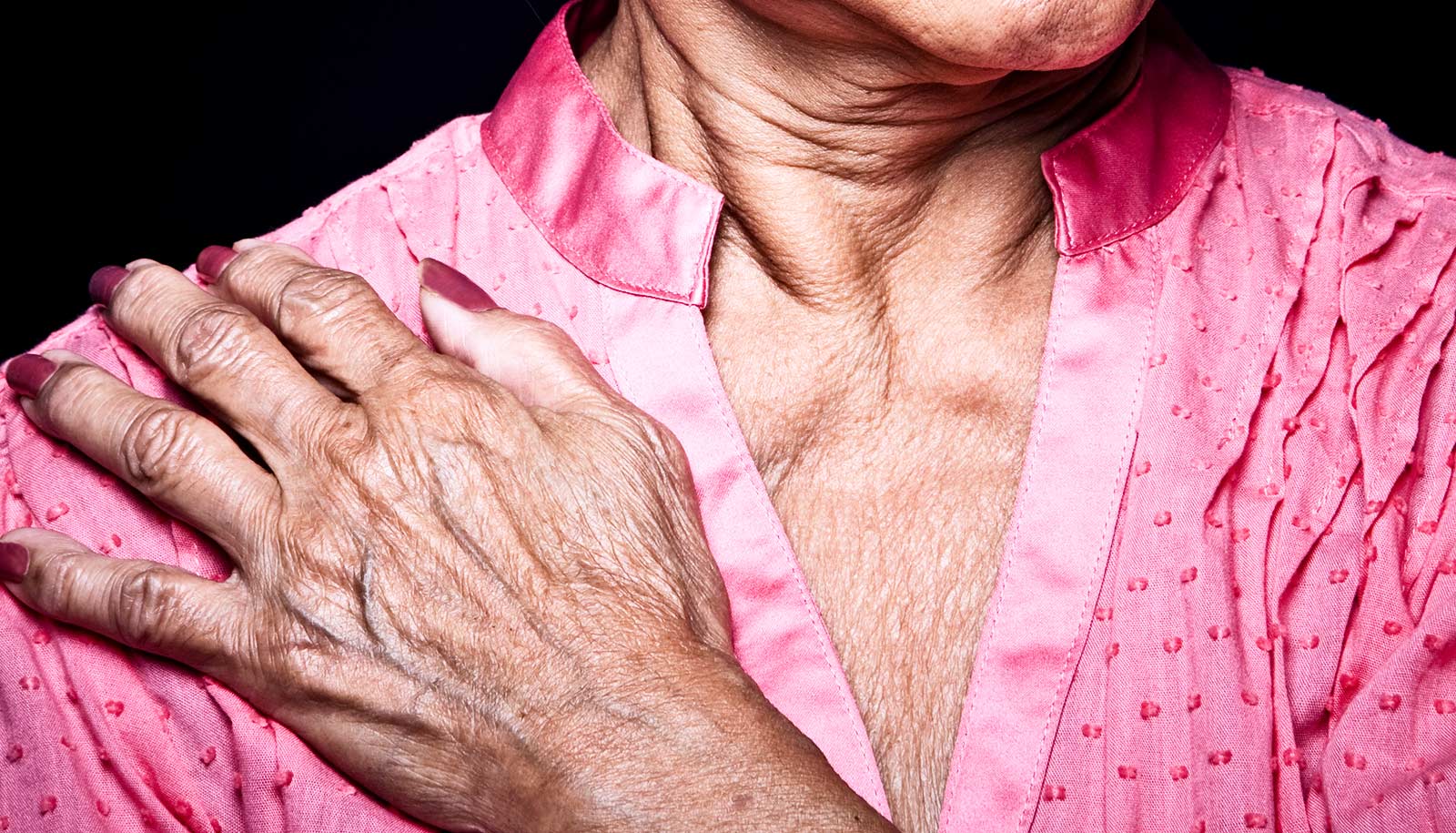Technology may be better than a tape measure for assessing a woman’s risk for lymphedema, painful swelling in the arm after breast cancer surgery.
Researchers compared bioimpedance spectroscopy (BIS) and the traditional tape measure method to see which was better at identifying women who should use compression sleeves and gauntlets to reduce lymphatic fluid in the arm and prevent progression to lymphedema.
BIS surveillance reduced rates of progression by approximately 10 percent, a clinically meaningful improvement, according to interim findings in Annals of Surgical Oncology.
“The bioimpedance device measures lymphatic fluid, and the tape measures much more than that,” says Sheila Ridner, professor and director of the PhD in nursing science program at Vanderbilt University School of Nursing.
“It takes more lymphatic fluid to make your whole arm volume change than it does to make the device pick up changes. The device is just more sensitive to changes in lymphatic fluid.”
Breast cancer-related lymphedema affects between 20 percent and 30 percent of women due to damage to the lymph glands from surgery, radiation, and some medicines, Ridner says. Lymphedema causes swelling in the arm, can be physically debilitating, and puts women at greater risk for infections and psychological stress.
The results are an interim analysis of an ongoing controlled trial launched in 2014. The analysis involved 508 participants who researchers monitored for a year or longer. Participants identified at risk for lymphedema received compression sleeves and gauntlets. Researchers instructed patients to wear them 12 hours daily for 28 days to prevent progression to lymphedema. Patients who developed lymphedema reached their endpoint with the trial and were referred to clinicians for complex decongestive physiotherapy (CDP).
“CDP is resource intensive and costly,” Ridner says. “Lymphedema therapists are not accessible everywhere and mostly are in metropolitan areas. You go an hour-and-a-half in any direction outside of Nashville, for example, and we can’t find people to treat these patients.
Clinicians have traditionally used tape measures, but that method can vary greatly depending upon how a clinician does it, researchers say.
“Tape measure is the most commonly used method around the world even though it is fraught with error,” Ridner says. “To get accurate measurements for a research study, there is an incredible amount of training to teach all the sites in this international study how to measure the same way. I do annual fidelity oversight visits to every single site to make sure there has not been any slippage in the protocol.”
BIS is a painless and noninvasive procedure that involves running an electronic signal through the body. The technology is similar to electronic monitors for body mass index, but much more refined.
Although the study showed that participants in the BIS experienced reduced rates of progression to lymphedema requiring CDP, the tape measure group triggered an intervention more often and earlier. The median time that triggered an intervention in the tape measure group was 2.8 months versus 9.5 months for the BIS group.
“It is possible that at three months post-surgery in some patients there remains a generalized, whole-arm inflammatory response that is identified by tape measure,” according to the study. “Increased extracellular fluid may not be a major factor in that volume change.”
Researchers will evaluate the factors associated with triggering for both groups going forward, Ridner says.
“We had statistically significant more people trigger an intervention that were in the tape group than in the BIS group, which was contrary to what many people thought would have happened in the study.
“One of the concerns about BIS in general was that it might generate false positives and we might psychologically distress people. That was never my experience in the 15 to 16 years I’ve been working with the technology.”
Ridner presented the analysis during the annual meeting of the American Society of Breast Surgeons in Dallas. Additional coauthors are from Vanderbilt, the Cleveland Clinic, and 21st Century Oncology.
Source: Tom Wilemon for Vanderbilt University

